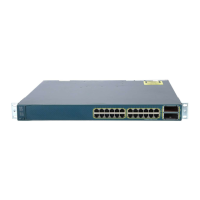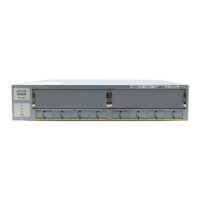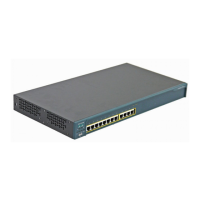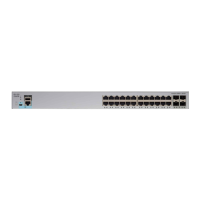27-17
Catalyst 3750 Switch Software Configuration Guide
78-16180-02
Chapter 27 Configuring SPAN and RSPAN
Configuring SPAN and RSPAN
To monitor all VLANs on the trunk port, use the no monitor session session_number filter global
configuration command.
This example shows how to remove any existing configuration on SPAN session 2, configure SPAN
session 2 to monitor traffic received on Gigabit Ethernet trunk port 2, and send traffic for only VLANs
1 through 5 and VLAN 9 to destination Gigabit Ethernet port 1.
Switch(config)# no monitor session 2
Switch(config)# monitor session 2 source interface gigabitethernet1/0/2 rx
Switch(config)# monitor session 2 filter vlan 1 - 5 , 9
Switch(config)# monitor session 2 destination interface gigabitethernet1/0/1
Switch(config)# end
Configuring RSPAN
This section describes how to configure RSPAN on your switch. It contains this configuration
information:
• RSPAN Configuration Guidelines, page 27-17
• Configuring a VLAN as an RSPAN VLAN, page 27-18
• Creating an RSPAN Source Session, page 27-19
• Creating an RSPAN Destination Session, page 27-20
• Creating an RSPAN Destination Session and Configuring Ingress Traffic, page 27-21
• Specifying VLANs to Filter, page 27-23
RSPAN Configuration Guidelines
Follow these guidelines when configuring RSPAN:
• All the items in the “SPAN Configuration Guidelines” section on page 27-11 apply to RSPAN.
• As RSPAN VLANs have special properties, you should reserve a few VLANs across your network
for use as RSPAN VLANs; do not assign access ports to these VLANs.
• You can apply an output access control list (ACL) to RSPAN traffic to selectively filter or monitor
specific packets. Specify these ACLs on the RSPAN VLAN in the RSPAN source switches.
• For RSPAN configuration, you can distribute the source ports and the destination ports across
multiple switches in your network.
• RSPAN does not support BPDU packet monitoring or other Layer 2 switch protocols.
• The RSPAN VLAN is configured only on trunk ports and not on access ports. To avoid unwanted
traffic in RSPAN VLANs, make sure that the VLAN remote-span feature is supported in all the
participating switches.
• Access ports (including voice VLAN ports) on the RSPAN VLAN are put in the inactive state.
Step 6
end Return to privileged EXEC mode.
Step 7
show monitor [session session_number]
show running-config
Verify the configuration.
Step 8
copy running-config startup-config (Optional) Save the configuration in the configuration file.
Command Purpose
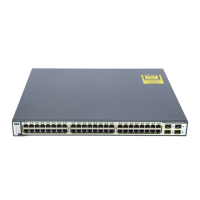
